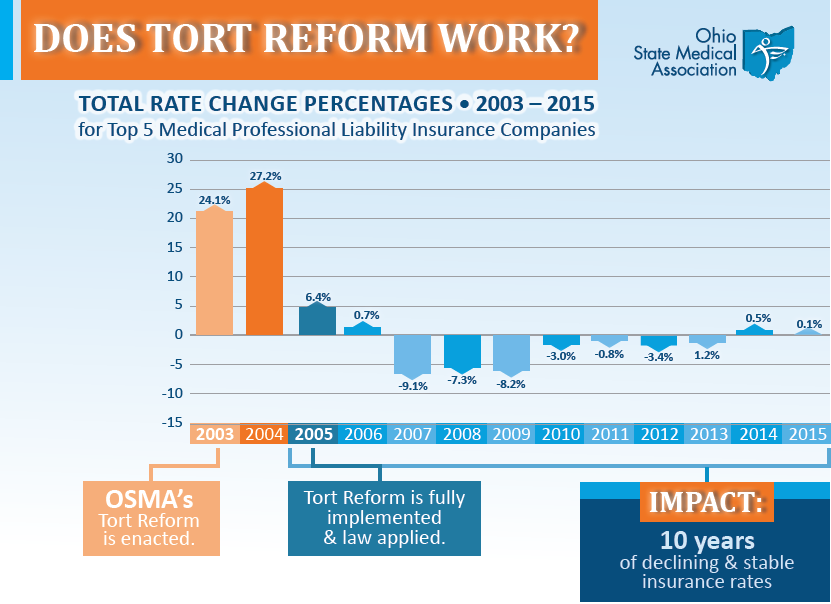November Election: Why Do Some Doctors Care So Much about “Judicial Philosophy” and “Tort Reform”?
This update is to provide background and history on the issue of medical liability insurance and Ohio’s tort reform law – items that have potential relevance in the Ohio Supreme Court races on the November ballot.
As a local medical society, the CMA did not take a position on state-wide elections. The Ohio State Medical Association did issue endorsements in the Supreme Court races.
For younger physicians or physicians whose employer covers their malpractice insurance, these issues might not appear particularly meaningful. For older physicians or physicians who purchase their own liability insurance, there can be a completely different perspective.
A doctor practicing medicine in Ohio 15 years ago faced a crisis in the malpractice insurance market. For several years there were annual insurance premium rate increases of 25% and many insurance carries stopped offering physician policies all together. At its low water mark, there were only a hand-full of companies for a physician to consider for their insurance.
The insurance market was reflecting an inability to gauge its potential liabilities due to the prevalence of successful court cases against physicians. Liability costs were deemed to be out of control. When liability insurance companies lose money, they either raise rates, or stop offering the insurance altogether.
The situation was such that Ohio had a hard time attracting new physicians. Many physicians changed their practices. And older physicians were essentially forced into early retirement. Healthcare access for Ohio patients became increasingly problematic.
As this problem worsened over the years, on different occasions the Ohio General Assembly passed legislation to bring “balance” to Ohio’s legal standards. These legislative efforts were thwarted by constitutional legal challenges that at the time were upheld by the then members of the Ohio Supreme Court.
Finally, in 2003, after much legislative wrangling and protests, new legal standards were passed by the General Assembly and these standards were upheld as Constitutional by newly elected members of the Supreme Court.
The impact on physicians was swift. The liability insurance crisis abated. The availability of policies greatly increased and premium costs saw real decreases for many years.
In the years following this crisis and its solution, physicians have had heightened awareness of the impact on physicians and patients of legal standards – both the legislature’s creation of the law, and also the Courts interpretation of the law.
There is no current movement of make significant change in Ohio’s tort law; however, there is also no guarantee that this current perspective might not be changed by either new legislators or new members of the Court.
Like all other election questions, physicians will make up their own minds about their vote. This update was intended to provide some background information on some less obvious issues that have application in eyes of many physicians. Additional background can be found here:
For more information about this issue or any other item related to November ballot, free free to contact the CMA.

